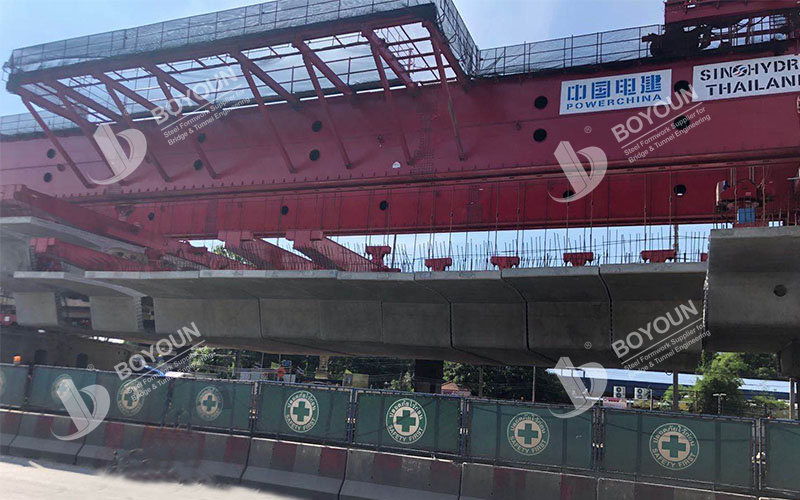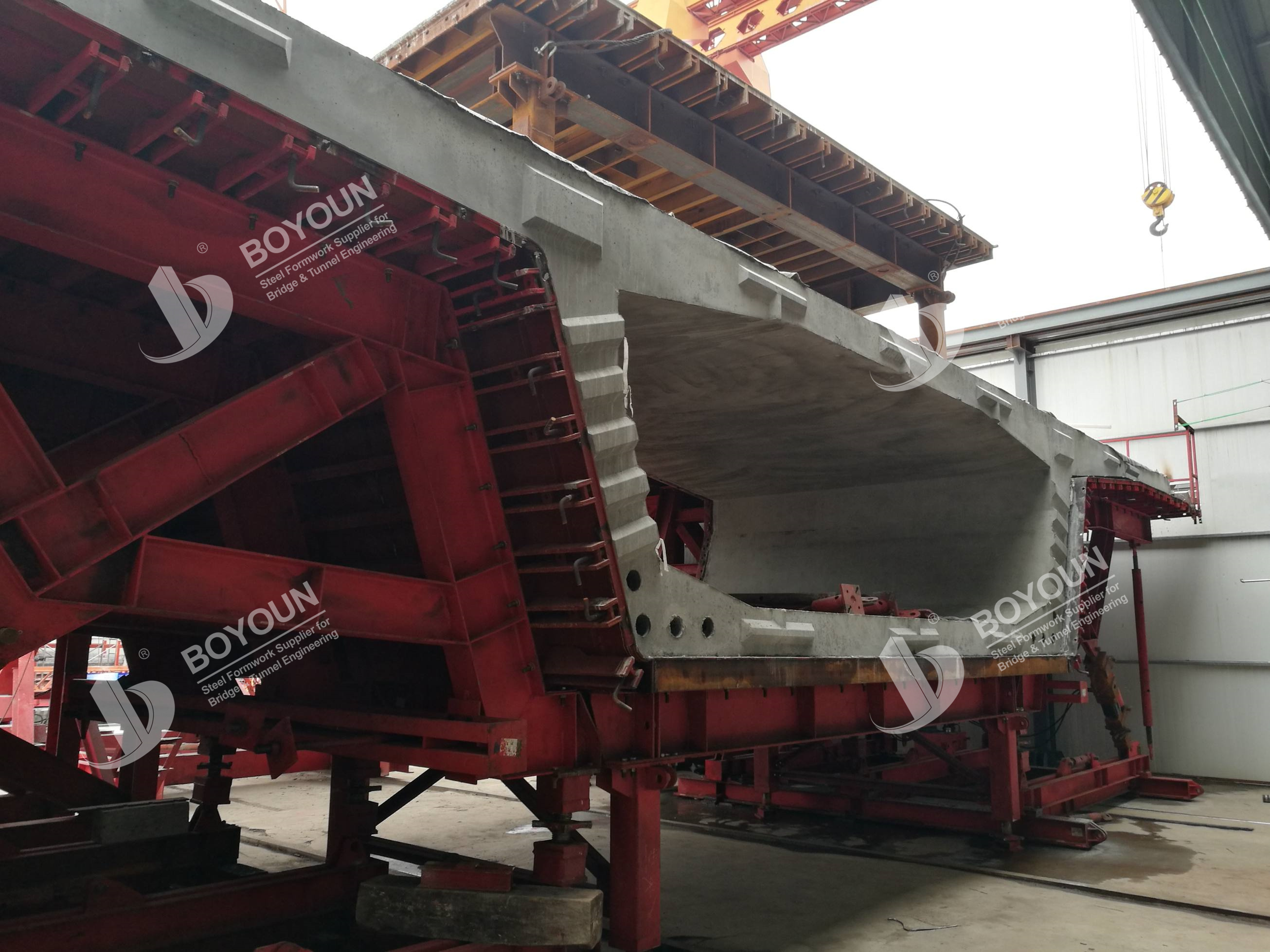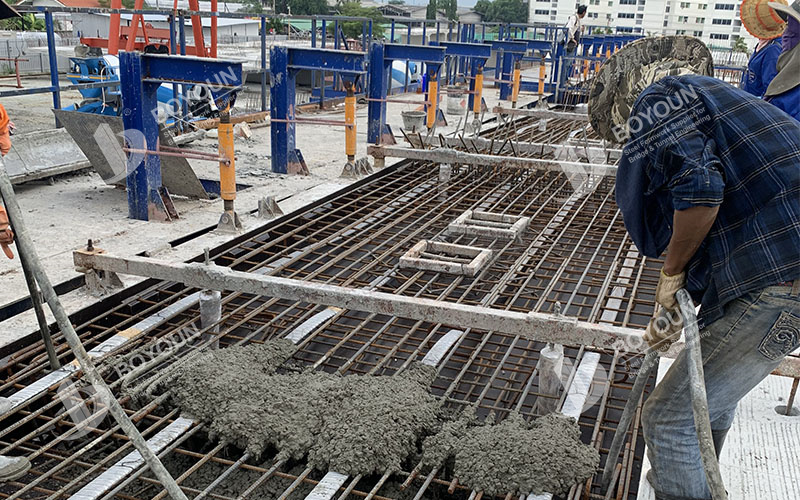With the continuous development of municipal three-dimensional transportation, in the congested urban construction of viaducts, overpasses and other transportation facilities in the construction technology has become an inevitable trend of modern urban transportation construction, but by the construction of space in the urban area and the constraints of traffic conditions of the construction of the construction of a great deal of difficulty, precast segmental box girder construction technology to promote and apply the construction of a solution to this construction problem.

The segmental precast box girder construction technique is characterized by occupying a smaller construction site and achieving complex linear curves, ensuring that the upper structure of the bridge can achieve aesthetically pleasing and practical design aesthetics within limited space. It is particularly suitable for constructing urban elevated bridges with complex linear shapes, small construction sites, and tight schedules. It also has the following advantages:
(1) The transportation and erection of the girder has minimal impact on traffic and the environment.
(2) Segmental box girder sections are lightweight and compact, making them more convenient for transportation than integral box girders.
(3) During assembly and erection, there is no restrictions on whether the beam face is continuous. It can be erected at any point, and with multiple bridge erection equipment, the installation and erection process is fast.
(4) All segmental girders are pre-cast on-site, ensuring high construction quality.
(5) The beam spans are assembled from segmental girders, which reduces concrete shrinkage and creep after installation and bridge completion.
(6) The use of external prestressing allows for smaller beam dimensions and improved material efficiency.
(7) Segmental girders have small components, making them easy to control their geometric shape and achieve aesthetically pleasing concrete structures.
(8) The length of individual segmental box girders can be adjusted and modified as needed, allowing for flexible adjustment of bridge spans within the allowable bearing capacity.
Therefore, the segmental box girder assembly construction technique has unique construction conditions in the construction of urban transportation infrastructure. It solves many challenges in constructing urban elevated bridges.

The selection of a segmental girder erection crane should be based on factors such as the maximum span specified in the bridge design, maximum weight of a single segment, number of segments per span, lifting height, lifting conditions, and assembly conditions.
The erection crane is installed in the pier span of the bridge's starting point. Detailed installation plans should be developed, carefully planning and verifying the weight, lifting height, range of motion, installation position, and fixing measures of each lifting component. During installation, the crane components are sequentially erected and connected to the pier top using large lifting equipment.
After the installation of the erection crane, it must be tested, debugged, and load-tested before being put into use. Single-action testing is performed on each system of the crane, followed by combined testing. After achieving satisfactory results in the testing phase, a load test is performed at 1.5 times the maximum lifting capacity.
The fabrication process for segmental box girders involves precasting several small segments in the fabrication yard, and then transporting each individual segment to the installation site in the designated assembly sequence using conventional transportation vehicles. Finally, the segmental girders are lifted and connected by the segmental girder assembly crane to form a complete girder with the desired span.
Segmental box girder fabrication can be performed using either the "long-line method" or the "short-line method". The long-line method involves designing and fabricating the entire span's segments within a single set of molds. The short-line method involves designing and fabricating each individual segment within a set of molds. Regardless of the method chosen, adjacent segment contact surfaces should be fabricated to ensure proper alignment and interlocking of shear keys and grooves.
After the precast segmental girders arrive at the installation site, the top segment is lifted to the top of the pier using a large self-propelled crane. The position of the top segment is adjusted using hydraulic jacks. After confirming that the installation position, alignment, and elevation meet design requirements, the top segment is temporarily anchored to the pier before the crane is positioned for hole-through installation.
The remaining segmental girders in the span are lifted by the crane's lifting trolley to the same height as the hanging point. The girder lifting device is connected to the crane's lifting rod, after the hoisting trolley is detached, the installation of the next segment can proceed. Once all the segmental girders are lifted and aligned according to the installation sequence, epoxy resin adhesive with a minimum thickness of 3mm is applied to the contact surfaces to ensure a tight joint. Temporary prestressing is applied during the alignment and adhesive joint of adjacent segments.
To ensure sufficient installation clearance during the assembly of segmental girders, a wet joint with a width of approximately 10cm is created at the connection between the pier top segment and the suspended segment. The wet joint is formed by pouring concrete to connect and solidify all the segments of the entire span. After measuring and verifying that the pier top segment and all the adhesive joints of the suspended segments meet the design requirements in terms of alignment and elevation, the formwork for the wet joint is installed, and concrete with the same strength as the girder design is poured.
The process of reinforcing segmental box girders can be accomplished using either external tendons or internal tendons. The process of threading prestressed steel strands is performed during the curing period of the wet joint concrete. The post-tensioning operation for the entire girder is carried out once the concrete strength reaches 18MPa. Depending on available space at the joint ends, single-end sectional symmetry prestressing or double-end sectional symmetry prestressing can be used. The prestressing sequence must strictly follow the design drawings.
After prestressing, grouting is carried out within 48 hours. For internally prestressed tendons, grout is injected into the prestressing ducts of the girder. For externally prestressed tendons, grout is injected into the protection sheaths of the steel strands.

After completing the prestressing and grouting process, the crane's front and rear legs are lowered, and the lifting devices on each segment are removed. The crane is then moved to the next span for the installation of the next segment.
When the span of an elevated bridge crosses a road or river, the vehicles transporting the segmental girders cannot reach the exact position under the crane directly. In such cases, the segmental girders can be transported to a suitable location at the end of the crane where transportation conditions are available. The crane's lifting trolley can then be moved to the position where the segmental girders can be lifted, and after the girders are lifted, the crane returns to the designated installation position.
For segmental box girders without wet joints in their structural design or for segmental box girders limited by installation space, the traditional in-place assembly methods are not feasible. In such cases, a high-level assembly method can be employed. This involves hanging all the segments above the designed girder face, completing the alignment, bonding, prestressing, and other procedures step by step to form the complete span of the girder. Finally, using the double lifting points on the crane, the entire girder is precisely lowered onto the bridge bearings.
The segmental precast box girder assembly construction technique allows for the construction of girders with varying spans using a single segmental girder assembly crane, and it can also achieve the installation of girders with small-radius curves. This technique has significant social and economic benefits.
The strict control of technical parameters and quality during the fabrication and installation of segmental girders ensures advantages in controlling the bridge's design, load-bearing capacity, and addressing various construction challenges. The technical and economic indicators are considerably significant.

International Department: Room 2507-2508, Tower C of Wanda Plaza, Tongzhou District, Beijing 101118, China.
+86-13021287080
info@boyoun.cn